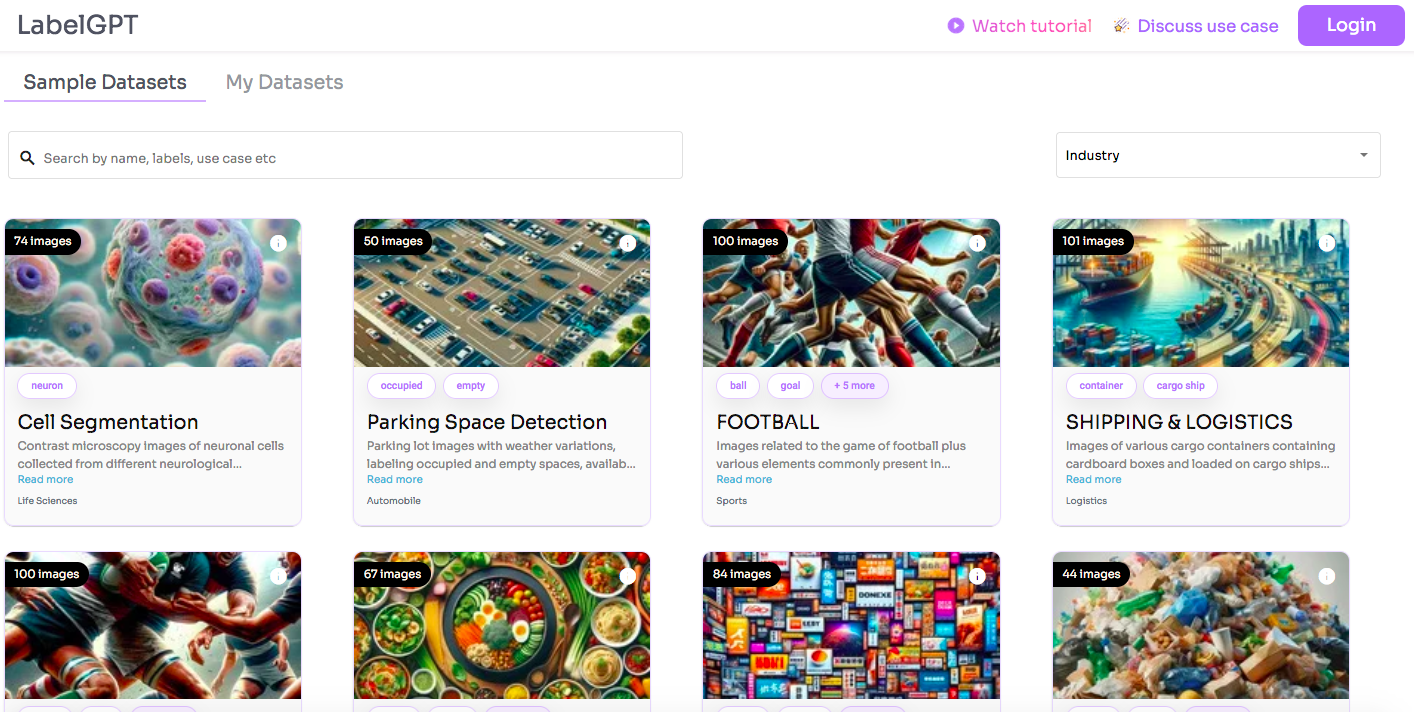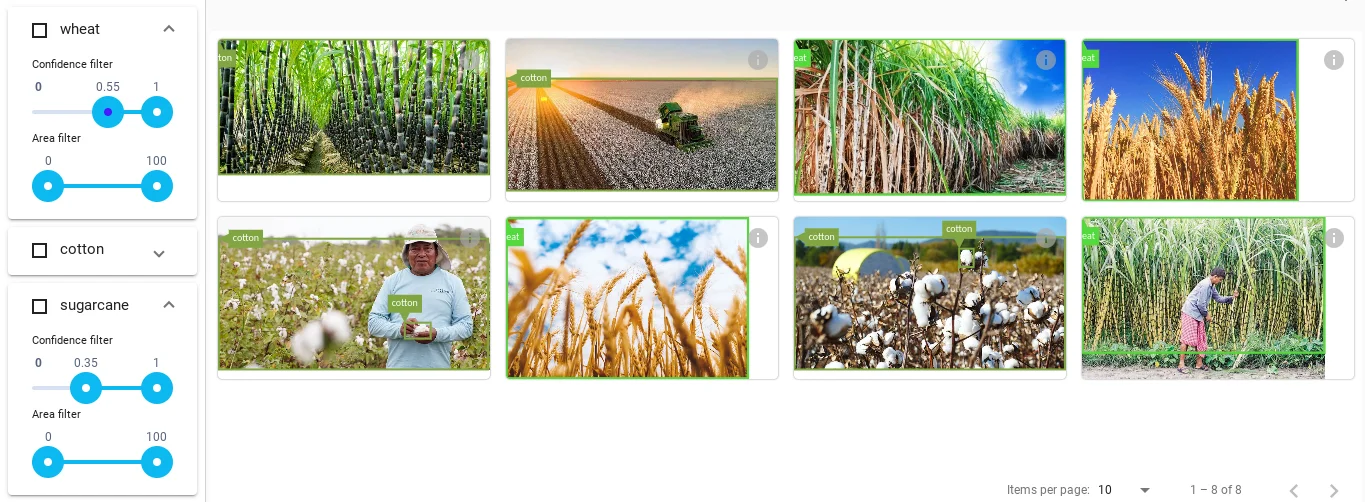Cultivating Precision: LabelGPT's Application For Agriculture

Introduction
In the vast and intricate world of agriculture, precision and efficiency are of paramount importance. In this age of technological innovation, AI-powered tools like LabelGPT are stepping up to the plate, offering promising solutions to some of the most pressing challenges in the field.
We present to you a case study that explores LabelGPT's performance in agriculture-related use cases, highlighting both its achievements and areas for further growth.
Why It Matters?
Agriculture, the backbone of our civilization, has always thrived on the principles of precision, hard work, and innovation. In this age of technological revolution, the importance of precision has taken center stage, impacting everything from crop management to livestock health.
This case study on LabelGPT is not just about showcasing a powerful tool; it's about the farmers, agronomists, and innovators who seek to revolutionize an age-old industry. It's for those who understand that the key to a bountiful harvest and sustainable farming lies in the judicious use of technology and data.
In the heart of every farmer, there's a vision of a future where their toil is complemented by AI-powered assistants. In every agronomist's mind, there's a drive to create a world where data-driven decisions lead to more efficient resource management.
LabelGPT is a step toward this future, and this case study is here to motivate, inspire, and instill confidence in the potential of AI in agriculture.
Unveiling LabelGPT's Precision
Before we delve into LabelGPT's performance in the retail industry, it's important to emphasize that our insights are based on extensive analysis and a data-driven approach for the labels mentioned below.
Let's explore how LabelGPT excels in specific use cases within the retail industry and how it has the potential of improvements in few others, each supported by precise accuracy percentages.

LabelGPT: Auto Detect Object In Agriculture Dataset
Higher Accuracy Classes
LabelGPT has demonstrated remarkable accuracy in various categories, particularly excelling in agriculture use cases. It is important to note that, in this context, only labels with an accuracy rate exceeding 80% are categorized as higher accuracy classes which are as follows -
1. Rodent Detection
2. Pest Detection
3. Livestock - Cow and Pig Recognition
4. Birds and Rabbit Detection
5. Crop Grading and Sorting for corn, grapes and pumpkins
6. Crop Grading and Sorting for apples, blueberries, lettuce and rice
7. Identifying Rotten Fruits
Let's explore each of these above mentioned use cases in detail -
1. Rodent Detection: Agriculture faces a relentless battle against crop-damaging rodents. LabelGPT's impressive accuracy of 95% in rodent detection brings a powerful tool to pest control efforts. With LabelGPT, you can pinpoint rodent hot spots with ease.

2. Pest Detection: Pests are the nemesis of crops. LabelGPT's precision in pest detection allows for early intervention, reducing crop losses with an accuracy of 85%. As the saying goes, "An apple a day keeps the doctor away, but LabelGPT keeps pests at bay."

3. Livestock - Cow and Pig Recognition: Efficient livestock management requires knowing your herd. LabelGPT excels at recognizing cows and pigs, aiding in health monitoring and livestock management with an accuracy of 80%. It's like having a digital cowboy or pig-wrangler.

4. Birds and Rabbit Detection: Birds and rabbits might be charming, but not in your crop fields. LabelGPT's accuracy of 80% in detecting them helps protect your harvest. It's a high-tech scarecrow!

5. Crop Grading and Sorting for corn, grapes and pumpkins: Precision in grading and sorting crops is essential for quality control and efficient distribution. LabelGPT's accuracy of 83% ensures that your corn, grapes, and pumpkins meet the grade, every time.

6. Crop Grading and Sorting for apples, blueberries, lettuce and rice: From apples to rice, LabelGPT's excellence in crop grading and sorting with an accuracy of 75%, ensuring your products are of the highest quality. A must-have for any agriculture venture.

7. Identifying Rotten Fruits: Quality control in agriculture is paramount. LabelGPT's prowess in recognizing rotten fruits helps reduce waste with an accuracy of 85% and ensures that only the best reach the market. No more "rotten apple" surprises.
Medium Accuracy Classes
While LabelGPT has notably excelled in high-accuracy categories, it also demonstrates promise in medium-accuracy areas, with an acknowledgment of room for improvement. In this context, medium accuracy classes are defined as labels with an accuracy rate falling between 60% and 80%, which are as follows -
1. Livestock - chicken, horse and sheep
2. Crop Grading and Sorting for wheat, cotton and sugarcane
Let's explore each of these use cases mentioned above in detail -
1. Livestock - chicken, horse and sheep: While medium accuracy of 60% might be a good start for some, there's room for improvement in recognizing chickens, horses, and sheep. With further training and fine-tuning, LabelGPT could become your reliable livestock assistant.

2. Crop Grading and Sorting for wheat, cotton and sugarcane: Medium accuracy of 65% in grading and sorting wheat, cotton, and sugarcane signifies potential growth. Specific training on agriculture-specific data can elevate LabelGPT's performance in these areas. The future is ripe for improvements.

As we navigate the vast landscape of agriculture, LabelGPT stands as a promising ally, enabling precision, reducing losses, and improving quality. With its impressive accuracy in various high-impact categories and potential for growth in others, LabelGPT is ready to lead the way in revolutionizing agriculture. After all, in the world of farming, as in life, accuracy is the root of success and a fruitful harvest.
Challenges and Opportunities: Nurturing Growth
In our agriculture use case evaluation, LabelGPT's performance reflected the complexity and diversity of the field. Agriculture demands a profound understanding of not just the labels but also the context in which they exist. This presents both challenges and opportunities for the software:
1. Contextual Understanding: Agriculture labels are often closely related and dependent on their surroundings. Enhancing LabelGPT's contextual understanding will be a key focus for future improvements.
2. Further Training: To boost accuracy in medium-accuracy categories, specific fine-tuning and training on agriculture-specific data could be a promising avenue.
Unlocking the Potential
While LabelGPT exhibits varying levels of accuracy in recognizing agriculture labels, the case study underscores its enormous potential as a valuable tool for the agriculture industry. The results reveal that agriculture is indeed a domain with complex and diverse use cases, and LabelGPT is poised to make a meaningful impact.
With further refinement and dedicated fine-tuning of the software to agriculture scenarios, its performance can be enhanced, expanding its usability within the agricultural industry. This AI-powered tool holds the key to transforming agriculture through precision, data-driven decision-making, and efficient resource management.
As agriculture evolves in the digital age, LabelGPT stands ready to play a pivotal role in ensuring a bountiful harvest and sustainable farming practices. The future of agriculture is brighter with the assistance of LabelGPT, the AI partner that helps you label your way to success in the fields!
Industry Leaders
Agriculture's digital transformation isn't just a theoretical concept. It's a vibrant reality led by visionary companies. These organizations are at the forefront of developing computer vision solutions that promise to reshape the agricultural landscape. Names like Farmwise, Blue River Technology, Verdant Robotics are investing in cutting-edge technologies to empower farmers and create a sustainable, data-driven agricultural future.
Conclusion
In the vast expanse of agriculture, where the unpredictability of nature meets the precision of technology, LabelGPT emerges as a promising ally. Its journey in the agriculture sector, as highlighted in this case study, reveals both its strengths and the areas where growth is necessary. Agriculture, with its diverse and complex use cases, offers a challenging yet rewarding arena for AI-powered tools.
As agriculture evolves in the digital age, LabelGPT stands as a symbol of progress. With further refinement and dedicated fine-tuning for agriculture scenarios, this AI tool holds the potential to transform agriculture through precision, data-driven decision-making, and efficient resource management. The future of agriculture is indeed brighter with LabelGPT, the AI partner that aids in labeling the path to success in the fields.
The journey continues, and the field of agriculture is poised for an exciting transformation. As technology and agriculture intertwine, the promise of a more efficient, sustainable, and bountiful future awaits. Let's embrace this journey with open arms and a keen eye on innovation, for the harvest of progress is ripe for the taking ! Click Here
Resources and References :
These resources offer a deeper understanding of the technologies and methodologies used in the agriculture and livestock industry empowering you to contribute to the advancement of better and efficient retail use cases.
i. Agriculture and Livestock Dataset : Click Here
ii. Computer vision applied to food and agricultural products : Click Here
iii. Computer Vision-Based Smart Agriculture Storage with Quality and Quantity Analysis and Recipe Suggestion : Click Here

Simplify Your Data Annotation Workflow With Proven Strategies
Download the Free Guide

